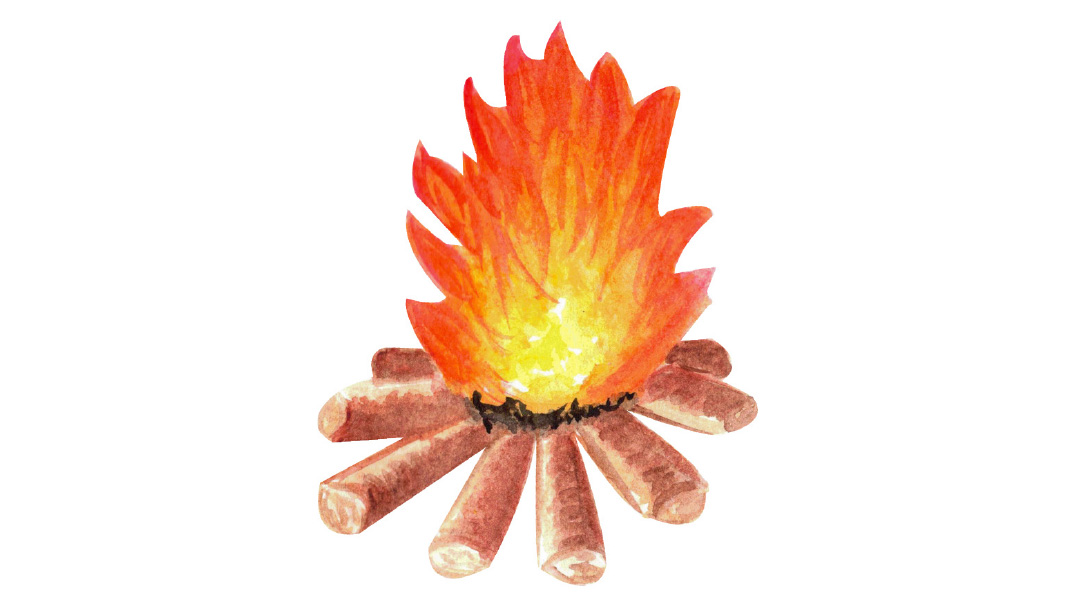Ten for Ten
| April 8, 2025Contained within these ten plagues are deep secrets of the Creation

The recitation of the Ten Makkos is one of the highlights of the Seder, the subject of many commentaries, songs, and school art projects. But contained within these ten plagues are deep secrets of the Creation, plumbed by Chazal and the Rishonim. Our exploration begins with a consideration of… names.
1
The Name of Sefer Shemos
The second of the five Chumashim is today universally known as Sefer Shemos. But in the Rishonim, we find various other titles. The Ramban refers to it as Sefer Hageulah — the “Book of Redemption.” The Netziv (introduction to Ha’amek Davar, Sefer Shemos) quotes the Bahag (an acronym for “Baal Halachos Gedolos,” a halachic compendium dating back to the times of the Geonim), who titles it simply Sefer Sheini — the “Second Sefer.”
On a simple level, this title is most appropriate. Shemos is, in fact, the “Second Sefer.” But this very simplicity leads to the question — did the Bahag run out of ideas for names? The Bahag himself lists beautiful titles for each of the other four Chumashim. The first is Sefer Bereishis, the third is Sefer HaKohanim, the fourth is Chumash Hapekudim, and the fifth is Mishneh Torah. Why, then, would the Bahag opt for such a simplistic description of Shemos? The truth is that the Gemara (Sotah 36b) refers to Shefer Shemos as Sefer Sheini, so the question applies to the Gemara as well. Why such a bland title?
It would seem that beneath the humble veneer of the words “Sefer Sheini” must lie the very core of what Sefer Shemos is all about. How so? What could this mean?
2
The Ten Makkos and the Ten Statements of Creation
The Midrash (Pesikta Zutrasi; Midrash Lekach Tov, Shemos 9:13) shares a cryptic teaching. Hashem smote the Mitzrim with Ten Makkos, says the Midrash, to punish them for enslaving Klal Yisrael, for whom the entire world was created — with ten utterances (as the Mishnah teaches in Pirkei Avos 5:1, “The world was created in ten utterances”).
What does this mean? How is the structure of the world’s creation relevant to the method of punishment inflicted upon the Mitzrim?
3
Tzeror Hamor’s Insight
Tzeror Hamor (Shemos 9:29) offers a very profound insight into the very purpose of the Ten Makkos. Pharaoh presented himself as a deity, an act of absolute and all-encompassing denial of Hashem’s existence and sovereignty over the world. When Hashem administered the Ten Makkos, it wasn’t merely a punishment. It was a Divine rebuttal to Pharaoh’s claim.
The makkos can be grouped into three categories: those pertaining to the Heaven; those pertaining to the earth; and those pertaining to the content of This World. This is a synopsis of all of creation — and that is precisely the point. Pharaoh denied Hashem’s creation of the world — consisting of a Heaven, Earth, and its content, and the Makkos were intended to demonstrate Hashem’s complete dominion over all three realms, and ultimately, the entire universe.
4
Reverse Order
Developing this idea further, the Maharal (Gevuros Hashem, 57) shares an insight that reveals a stunning new appreciation for the Ten Makkos and their eternal depth. Each makkah, he explains, corresponds directly with one of the ten utterances — although in reverse order.
How does this play out? The Maharal explains. While the Talmud does not specify which is the last of the ten utterances, the Maharal’s opinion is that it is Hashem’s instruction that there be “vegetation and fruit for the purpose of eating” (Bereishis 1:29). This is the final utterance and therefore correlates to the first makkah, which is Makkas Dam, in which the water of the Nile turned to blood. No water means no irrigation, and thus no fruit or vegetation.
At this point, the Maharal continues to show how each makkah relates to each utterance; however, he seems to abandon the structure of precise reverse order. The second makkah, Tzefardei’a, relates to the seventh utterance — “May the water bring forth creatures” (Bereishis 1:20). The third makkah, Kinnim, relates to the fourth utterance, “Let there be dry land” (Bereishis 1:10).
Moving along to the final makkah, the Maharal teaches that Makkas Bechoros corresponds to the first utterance, which, as the Gemara explains in Rosh Hashanah (32a) and Megillah (21b), is the word Bereishis. The bechor is the “reishis” of the family; thus, he is the target of the makkah relating to the utterance of Bereishis.
Although the order of the two patterns isn’t precisely reversed, Rav Dovid Cohen, rosh yeshivah of the Chevron yeshivah in Yerushalayim, explained to me that since the first makkah corresponds with the last utterance and the last makkah corresponds with the first utterance, the entire set is considered “reversed.”
Creation and Re-creation
R
av Cohen (Mizmor L’Dovid, chelek 1, maamar 7) shares another truly wondrous insight. He points to an astonishing similarity between one of the makkos and its corresponding utterance. The fifth utterance was that there be fruit-producing trees. The pasuk’s terminology is that the trees should be “eitz pri l’mino — fruit tree to its kind” (Bereishis 1:11).
Chazal explain that Hashem’s instruction was for the tree itself to taste like its fruit. The trees, however, did not obey this command. Says Rav Cohen, the makkah corresponding with this utterance is Arbeh — locusts, who ate all the fruits of the trees. He points out that they were directed to eat “kol ha’eitz — all of the tree” (Shemos 10:5). However, in practice, the arbeh only ate the vegetation of the ground and the pri ha’eitz (10:15). Thus, the disobedience of the arbeh and of the trees follow the same paradigm.
We can continue along this track and identify other fascinating similarities. Barad, we are taught, was a neis b’soch neis — a “miracle within a miracle.” This is because it was a blend of ice (water) and fire — a natural impossibility. Hashem does not perform nissim in vain; why was it necessary to fuse fire and water? The answer is that this makkah corresponded with the creation of the Rakia on Day Two. The Heavens are a fusion of fire and water — the very word “Shamayim” is made up of eish and mayim. Thus, the Barad perforce had to be made of fire and water.
Another remarkable commonality: Moshe Rabbeinu was told of Makkas Bechoros in an interesting context. Hashem began the revelation by detailing the mitzvah of hachodesh hazeh lachem. Now, Makkas Bechoros corresponds with the first utterance — Bereishis. The very first Rashi in the Torah tells us that, in truth, the Torah should have begun with hachodesh hazeh lachem. Amazingly, now, as Hashem recreates the world, He does, in fact, begin with hachodesh hazeh lachem.
Another truly amazing example: Makkas Choshech corresponds with the utterance “Let there be light.” There is the obvious juxtaposition of light and dark, but the connection goes even deeper.
Makkas Choshech came in two stages. There was only a basic level of darkness on the first three days; the following three days saw an intensified darkness. This mirrors the Ramban’s opinion that the Ohr Haganuz shone for three days, and then it was hidden from the third day on; the world could only partake of natural light. Both Makkas Choshech and the creation of light are therefore comprised of two three-day sets.
The Malbim offers an explanation that takes this even deeper. He says that Makkas Choshech was actually a recreation of light. Hashem was returning the Ohr Haganuz to the world, but the Divine light was so strong that it was blinding. Thus, Hashem created this light during Maaseh Bereishis, and He re-created it at Makkas Choshech.
We now understand why Sefer Shemos is called “Sefer Sheini.” For in Sefer Shemos, the process of creation through the ten utterances in Sefer Bereishis is repeated as the world undergoes a renewal.
(Originally featured in Mishpacha, Issue 1057)
Oops! We could not locate your form.







